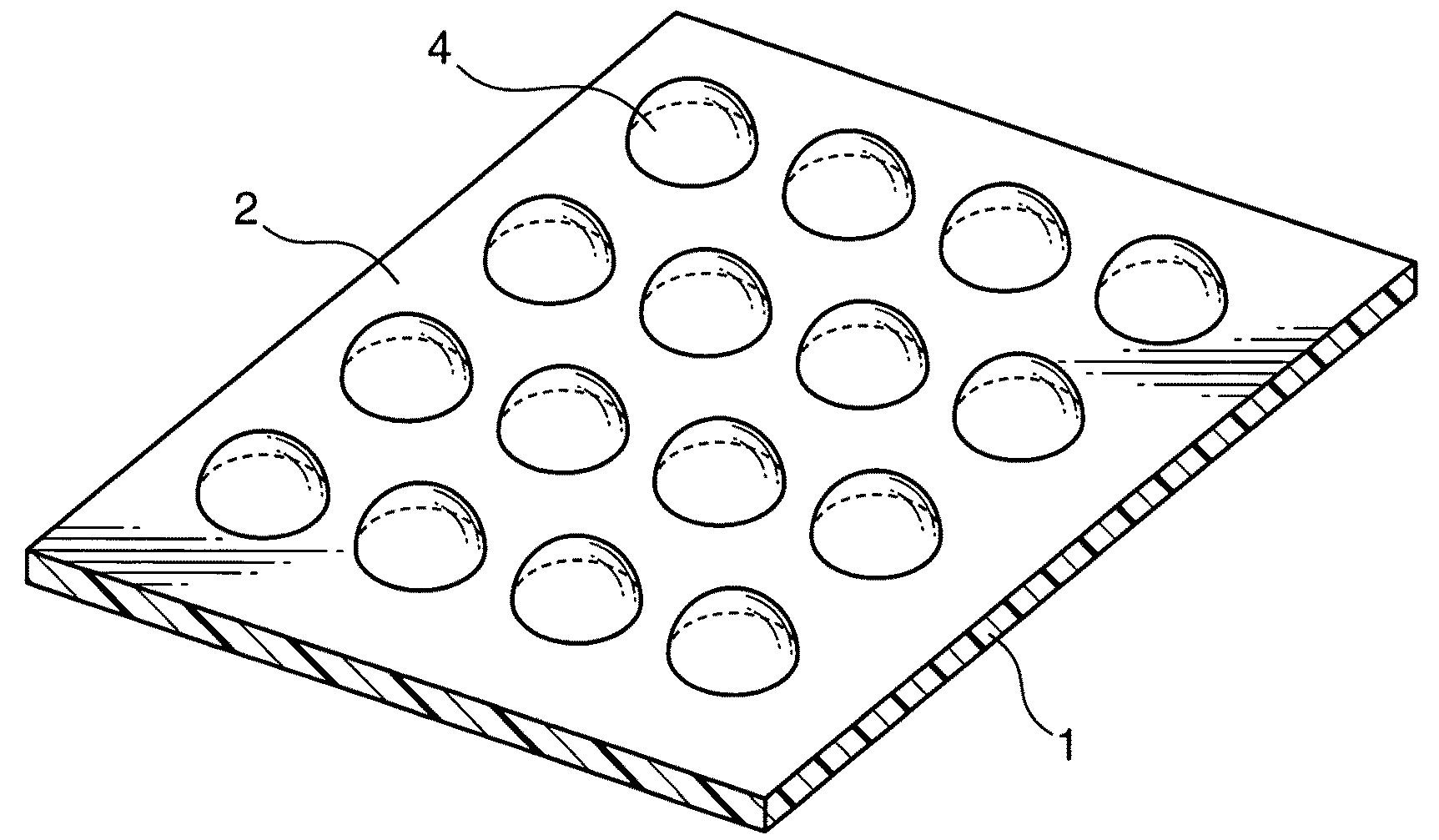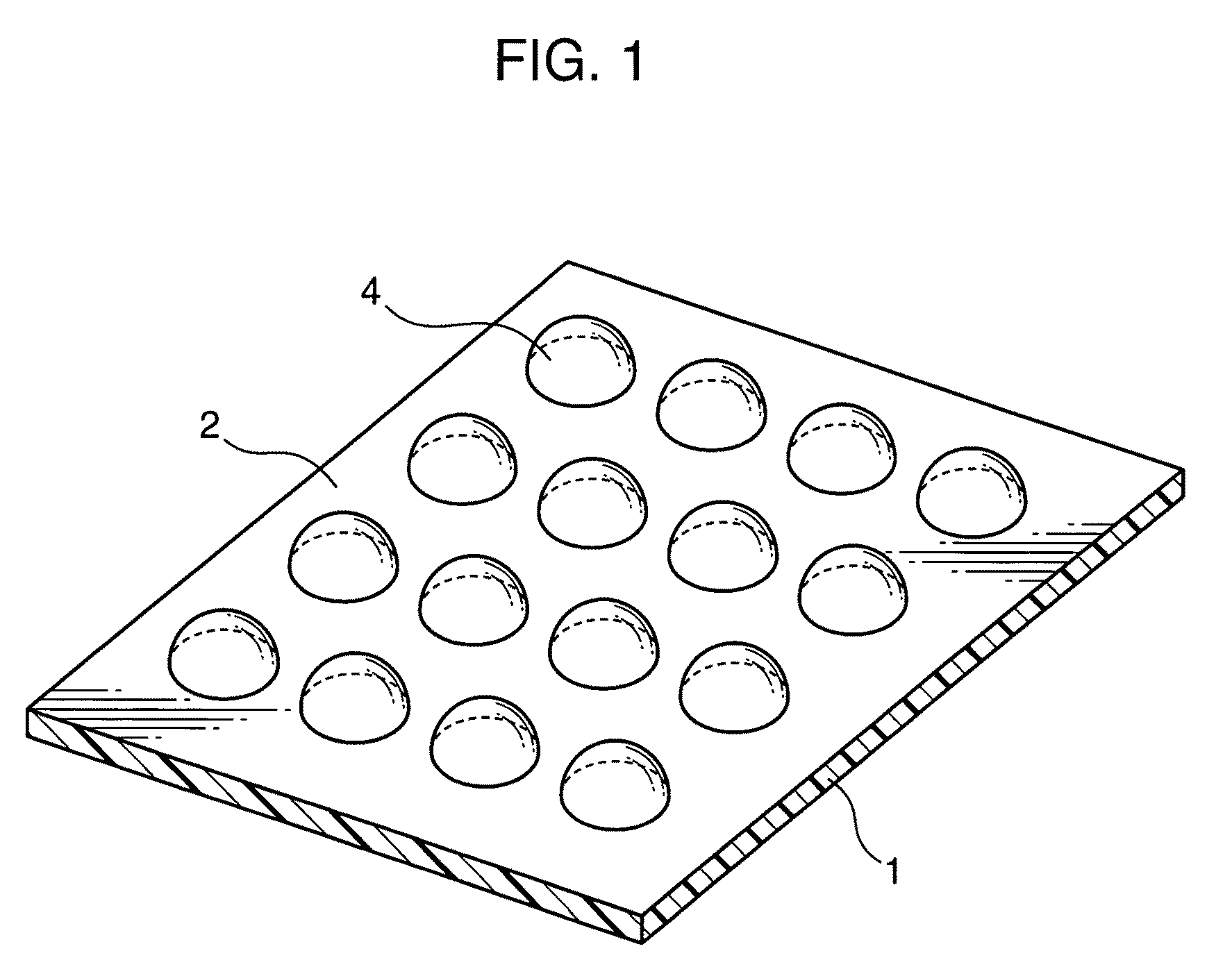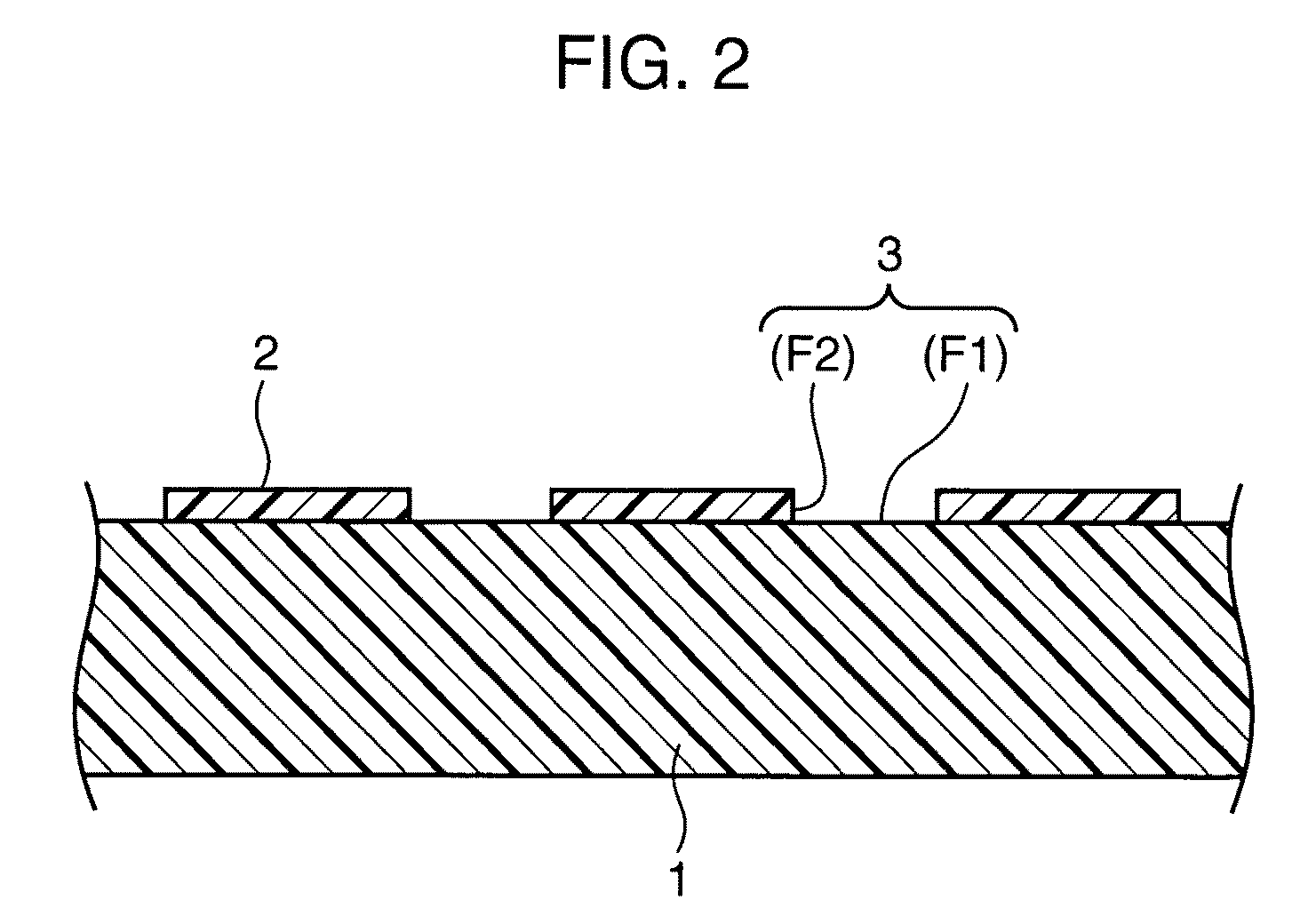Micro lens, micro lens array, and method of manufacturing the same
a micro lens and array technology, applied in the field of micro lens, can solve the problems of weak adhesion to the base material, difficult to form fine lens patterns at a high degree of accuracy, and limited selection of refractive index, so as to reduce the length of the optical path, improve the optical characteristics, and improve the effect of adhesion
- Summary
- Abstract
- Description
- Claims
- Application Information
AI Technical Summary
Benefits of technology
Problems solved by technology
Method used
Image
Examples
first embodiment
[0040]FIG. 1 will be referred to describe a micro lens of the invention. All drawings showing the micro lens, including FIG. 1, are illustrated schematically for easy understand of the invention, and thus the size, shapes, and so forth do not reflect those adopted actually.
[0041]FIG. 1 is a perspective view showing a micro lens array of the invention. As is shown in FIG. 1, respective lenses 4 are arrayed two-dimensionally on a base material 1. In this embodiment, except for the bottom surfaces of the lenses 4, the entire surface of the base material including the peripheries of the lenses 4 is covered with a first monolayer 2 having non-affinity for a lens material of the lenses 4 in comparison with regions within openings. It may be configured in such a manner as to cover only the periphery of the bottom surface of the opening at which the lens is disposed with the first monolayer 2; however, when the fabrication sequence is concerned, it is advantageous to cover the entire surfac...
second embodiment
[0095]To manufacture the micro lens of the invention, a method different from that in the first embodiment may be adopted for forming the opening. An example of such a method may be a step in which, after the first monolayer is formed, part of the formed first monolayer is removed by irradiation of energy for the opening to be formed selectively on the base material.
[0096]Different from the first embodiment, the resist pattern is not used in this method. Hence, any solvent capable of dissolving the organic molecule can be used without any particular limitation as the aprotic solvent used when preparing the organic-molecule-containing liquid. For example, organic solvents, such as hexadecane, chloroform, carbon tetrachloride, silicone oil, hexane, and toluene, can be used. One kind or a mixture of two or more kinds of these solvents can be used.
[0097]Among them, a mixed solvent containing hexadecane, chloroform, and carbon tetrachloride is preferable as the aprotic solvent. With the ...
third embodiment
[0100]In a manufacture of the micro lens of the invention, when a quantity of active hydrogen on the surface of the base material on which the first monolayer is to be formed is insufficient, it is preferable to provide an active hydrogen providing step before the monolayer forming step. By providing such a step, a selection range of the base materials can be broadened.
[0101]Examples of a method of providing active hydrogen to the base material include a method of subjecting the surface of the base material to a chemical oxidation treatment, a method of applying plasma treatment in the presence of oxygen, a method of performing ozone treatment or the like. Alternatively, there is a method of subjecting the base material to a hydrophilization treatment using, for example, SiCl4, HSiCl3, SiCl3O—(SiCl2—O)u—SiCl3 (where u is an integer from 0 to 6), Si(OH)4, HSi(OH)3, and Si(OH)3O—(Si(OH)2—O)u—Si(OH)3 (where u is an integer from 0 to 6).
[0102]Hereinafter, a method of subjecting the surf...
PUM
| Property | Measurement | Unit |
|---|---|---|
| thickness | aaaaa | aaaaa |
| diameter | aaaaa | aaaaa |
| diameter | aaaaa | aaaaa |
Abstract
Description
Claims
Application Information
 Login to View More
Login to View More - R&D
- Intellectual Property
- Life Sciences
- Materials
- Tech Scout
- Unparalleled Data Quality
- Higher Quality Content
- 60% Fewer Hallucinations
Browse by: Latest US Patents, China's latest patents, Technical Efficacy Thesaurus, Application Domain, Technology Topic, Popular Technical Reports.
© 2025 PatSnap. All rights reserved.Legal|Privacy policy|Modern Slavery Act Transparency Statement|Sitemap|About US| Contact US: help@patsnap.com



